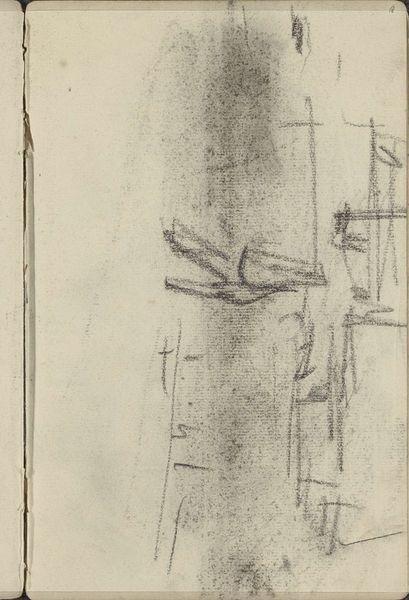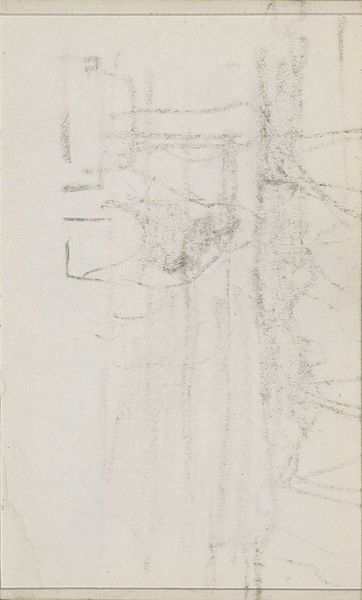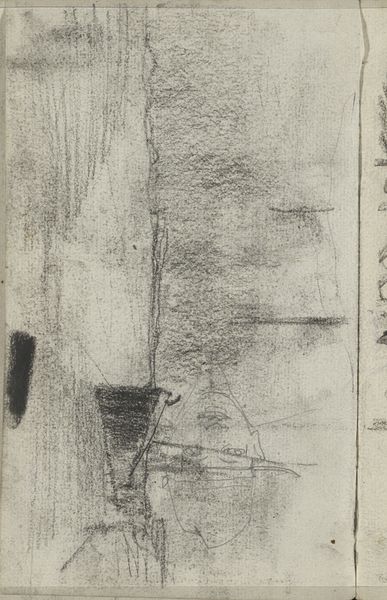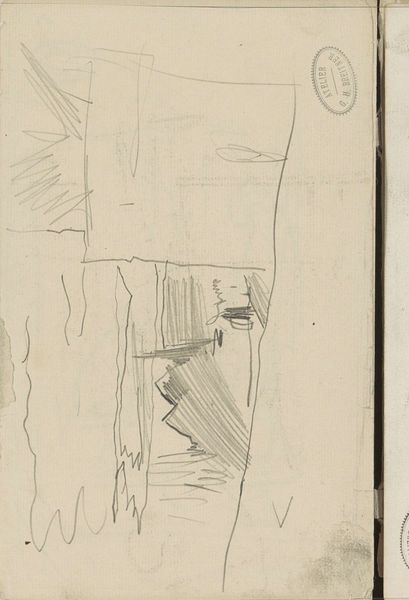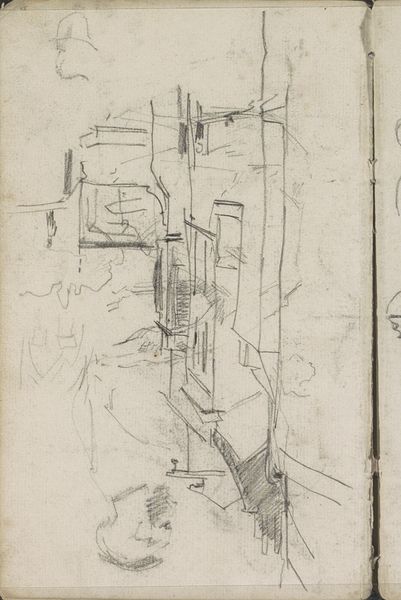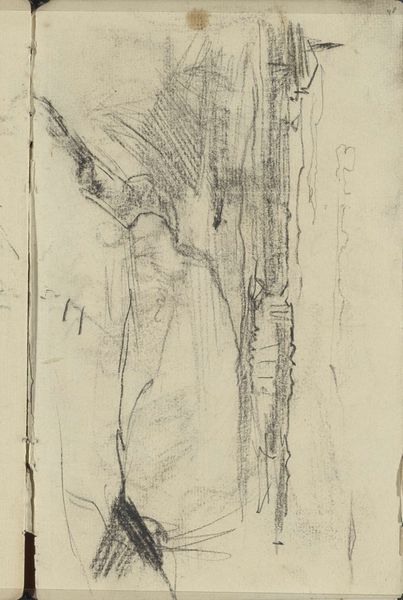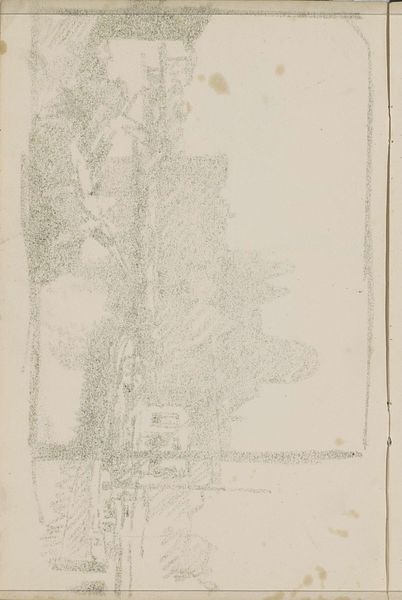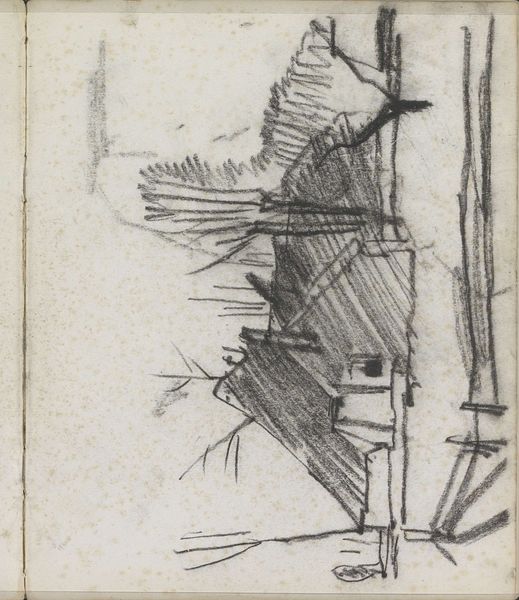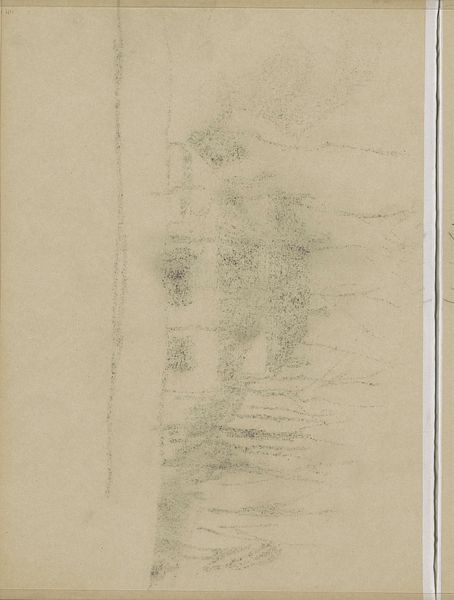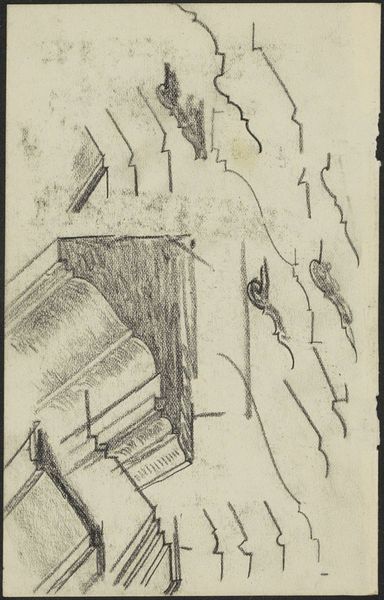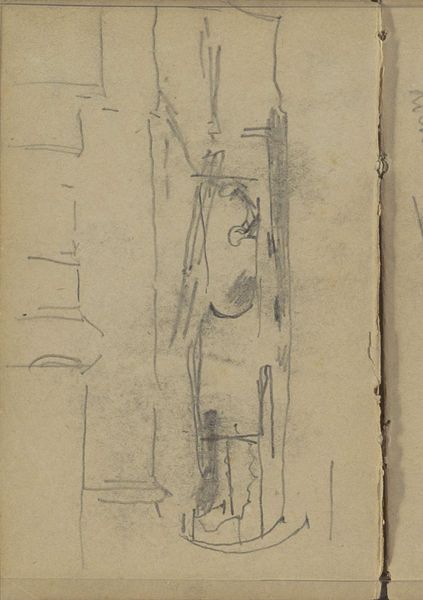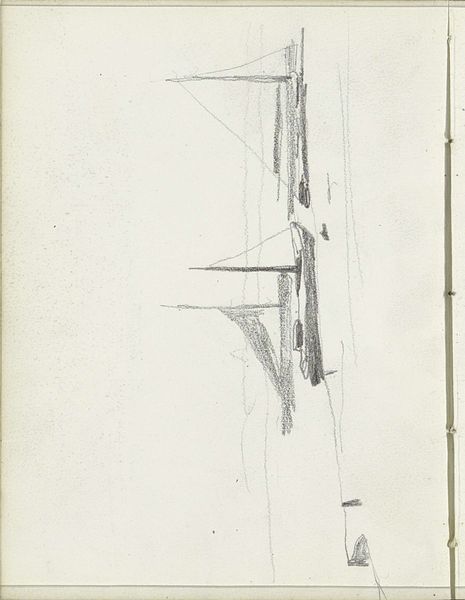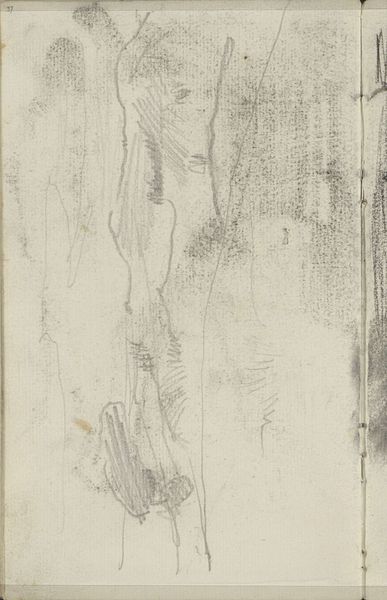
drawing, pencil, architecture
#
drawing
#
landscape
#
pencil
#
architecture
#
realism
Copyright: Rijks Museum: Open Domain
Curator: Breitner's "Landschap met bebouwing," dating from around 1880-1882, captures a landscape with buildings in delicate pencil strokes. It's currently housed here at the Rijksmuseum. Editor: It feels melancholic, almost haunting. The soft, gray tones evoke a sense of urban isolation, even amidst the suggestion of human settlement. Curator: I see it more as an intimate record of industrial development. Note the density of the pencil work around the structures, as if Breitner meticulously documented the physical labor and the building processes of this era. His directness connects this work firmly to Realism, don't you think? Editor: I do, and that emphasis on the reality of urban expansion raises crucial questions about social inequalities inherent to that development. The sketchy lines hint at instability, at precariousness. It suggests that the rapid industrial changes left many behind. The people who lived there could've become disenfranchised due to societal changes. Curator: Absolutely. And the choice of humble materials, pencil on paper, contrasts sharply with the monumental scale and rapid change the depicted buildings embody. Think of the availability and cost of pencils and paper for working-class artists compared to oil paints and canvas favored by the elite. It also serves a purely utilitarian purpose. Sketching the idea on location, the artist could produce the actual paintings in a workshop. Editor: Beyond just inequalities between artistic classes, I consider what Breitner is communicating about urban alienation. The anonymity inherent in the landscape connects strongly to broader societal themes about industrialization's impact on community and individuality. The houses start to resemble each other because every person gets alienated from society through capitalism. Curator: Interesting take. Ultimately, I am drawn to its delicate rendering using only a humble pencil. This artwork serves as a testament to Breitner's skill in extracting meaning and emotional resonance from rudimentary resources. Editor: Yes. It encourages us to look closely at these unassuming materials and imagine the human lives shaped and, sometimes, crushed, by societal transformations that shaped this cityscape. It evokes a call for further conversation and consciousness, I would say.
Comments
No comments
Be the first to comment and join the conversation on the ultimate creative platform.
